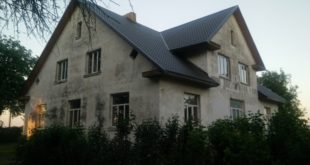As of 2011, Tajikistan’s agricultural sector accounts for 23.8% of GDP, 49.2% of employment, 30% of exports, and 40% of tax revenue. Agriculture has historically played a paramount role in Tajikistan’s social, economic, and political life. The volume of agricultural gross production in Tajikistan exceeded 14.8 billion somoni ($3.1 billion) in 2011, 7.9% more than in 2010.
In 2010-2011, raw cotton prices skyrocketed and for the first time in a decade Tajik cotton farmers were able to earn sizeable profits. The 2011-2012 season brought a decline in raw cotton prices, creating some financial concerns for the coming year. The agricultural sector may also present some investment opportunities, as the government and investors seek to develop food production and processing in order to diversify agriculture.

The agricultural resource base is characterized by limited arable land (only 7% of the country’s territory), heavy reliance on irrigation for crop production, and substantial areas of permanent pasture. The amount of arable land has been declining continuously since the Soviet collapse, from 4.2 million hectares (ha) in 1991 to 3.8 million ha in 2005. This decline continues due to natural and anthropogenic processes, including salinization, poor maintenance, lack of crop rotation, problems with fertilizers, and other factors.
| Agribusiness in Tajikistan in billions USD 2007 | 2008 | 2009 | 2010 | 2011 | |||||
| Total Market Size (local prod. + imports + equipment) | 2.9 | 3.1 | 3.7 | 4.1 | 4.4 | ||||
| Total Local Agricultural Production | 2.1 | 2.2 | 2.7 | 2.9 | 3.1 | ||||
| Total Agricultural Exports | 0.05 | 0.06 | 0.1 | 0.2 | 0.3 | ||||
| Total Agricultural Imports ** | 0.3 | 0.4 | 0.4 | 0.5 | 0.6 | ||||
| Imports from the U.S. | n/a | n/a | n/a | n/a | n/a | ||||
| Potential Market for equipment (assumes average cost of $35,000 per tractor) | 0.5 | 0.5 | 0.6 | 0.7 | 0.7 | ||||
| Annual Demand for agricultural microfinance loans (ADB) | 0.1 | 0.1 | 0.1 | 0.1 | 0.15 | ||||
 Комрон.инфо
Комрон.инфо



